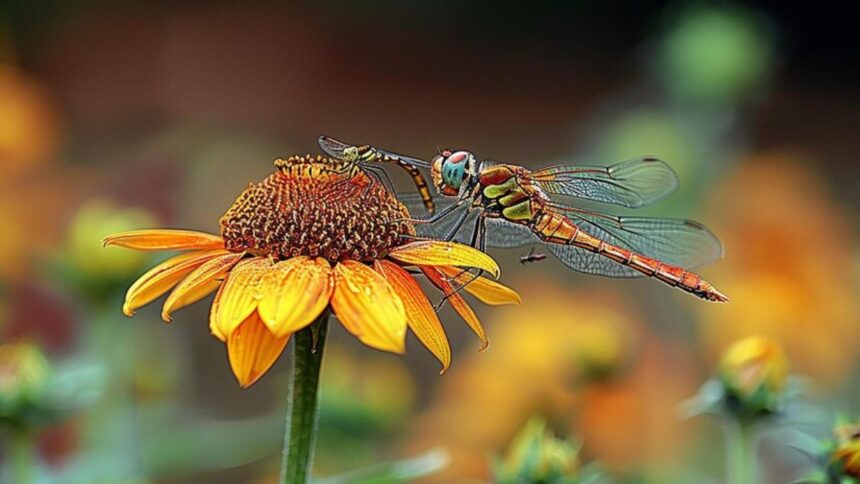Pollaste is an intriguing concept that has gained significant attention in recent years, particularly in sustainable and eco-friendly practices. While the term may seem unfamiliar to some, it represents a movement that could profoundly impact how we approach sustainability and environmental conservation. This article explores the core principles of it , its benefits, challenges, and potential for the future.
What is Pollaste?
Pollaste is a practice centered around pollination and its crucial role in maintaining ecological balance. It involves deliberate efforts to enhance and support the pollination process, which is essential for the survival of many plant species and, consequently, the broader ecosystem. It is not just about bees; it encompasses a wide range of pollinators, including butterflies, birds, bats, and even the wind.
The Importance of Pollination
Pollination is the process by which pollen is transferred from the male part of a flower to the female part, enabling fertilization and the production of seeds. This process is vital for the reproduction of flowering plants, which make up a significant portion of the world’s food supply. Without pollination, many plants would fail to produce fruits, nuts, and seeds, leading to a drastic reduction in food sources for both humans and wildlife.
Why Pollaste Matters
Pollaste is crucial because it actively addresses the decline in pollinator populations. With the increasing use of pesticides, habitat loss, and climate change, many pollinators are at risk. It initiatives work to create environments where pollinators can thrive, ensuring the continuation of the essential pollination process. This, in turn, supports biodiversity, food security, and overall ecological health.
How Pollaste Supports Biodiversity
Biodiversity refers to the variety of life in a particular habitat or ecosystem. Pollaste plays a significant role in supporting biodiversity by encouraging the growth of diverse plant species. When pollinators thrive, they help maintain the reproductive cycles of various plants, which in turn supports a wide range of animals and microorganisms that depend on these plants for food and shelter.
Pollaste and Sustainable Agriculture
Sustainable agriculture relies heavily on the health of pollinator populations. By adopting pollaste practices, farmers can enhance crop yields and reduce their dependence on synthetic fertilizers and pesticides. This not only leads to healthier food but also minimizes the environmental impact of farming. It promotes a more natural, self-sustaining agricultural system that benefits both the environment and the economy.
Urban Pollaste: Bringing Nature to Cities
Urban areas can also benefit from pollaste. Cities often lack the natural habitats needed to support pollinators, but urban it initiatives aim to change that. By planting pollinator-friendly gardens, creating green roofs, and establishing urban beekeeping projects, cities can contribute to the conservation of pollinators. These efforts not only beautify urban spaces but also improve air quality and support local ecosystems.
Challenges Facing Pollaste
Despite its many benefits, pollaste faces several challenges. One of the main issues is the widespread use of pesticides, which can be harmful to pollinators. Additionally, habitat loss due to urbanization and agricultural expansion reduces the available space for pollinators to live and feed. Climate change also poses a significant threat, as it can alter the timing of flowering and migration patterns, disrupting the delicate balance between plants and their pollinators.
Successful Initiatives
There are many successful pollaste initiatives around the world. For example, the “Bee-Friendly Farming” program encourages farmers to create habitats that support pollinators by planting cover crops, reducing pesticide use, and providing nesting sites. Another example is the “Pollinator Pathway” project, which aims to connect urban green spaces with corridors of pollinator-friendly plants, allowing pollinators to move freely through cities.
How to Get Involved
Anyone can get involved in pollaste, whether you live in a rural area or a bustling city. Planting a pollinator-friendly garden is one of the easiest ways to support pollinators. Choose native plants that provide nectar and pollen, and avoid using pesticides. You can also support local beekeepers, participate in citizen science projects that track pollinator populations, or advocate for policies that protect pollinator habitats.
The Future
The future of it looks promising, with increasing awareness and action being taken to support pollinators. As more people recognize the importance of pollination for food security and biodiversity, It initiatives are likely to grow. Innovations in technology and agriculture could also provide new opportunities to enhance pollinator habitats and monitor their health more effectively.
Conclusion:
Pollaste is more than just a trend; it is a vital practice that supports the health of our planet. By understanding and supporting pollination, we can contribute to a more sustainable and biodiverse world. Whether through small actions like planting a garden or larger initiatives like creating urban pollinator pathways, everyone can play a role in the pollaste movement.
FAQs
What are the most common pollinators involved in pollaste?
The most common pollinators include bees, butterflies, birds, bats, and insects like beetles and flies.
How can urban areas contribute to pollaste?
Urban areas can contribute by planting pollinator-friendly gardens, creating green roofs, and supporting urban beekeeping.
What are some simple ways to support pollaste at home?
Planting native flowers, avoiding pesticides, and creating habitats for pollinators are simple ways to support it .
Why is pollaste important for agriculture?
Pollaste is important for agriculture because it enhances crop yields and reduces the need for chemical fertilizers and pesticides.
How does climate change affect pollaste?
Climate change can alter the timing of flowering and migration patterns, which can disrupt the balance between plants and pollinators, posing challenges for pollaste.
